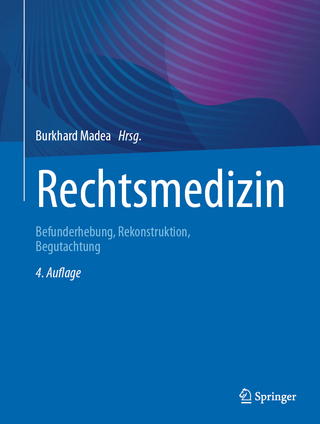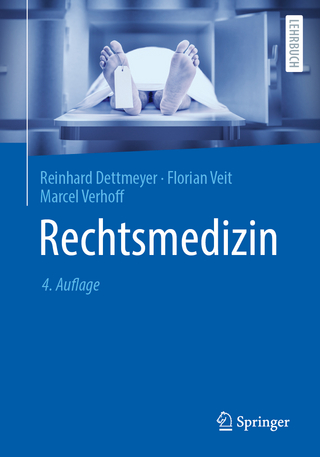
An Introduction to Forensic DNA Analysis
Seiten
2001
|
2nd edition
Crc Press Inc (Verlag)
978-0-8493-0233-6 (ISBN)
Crc Press Inc (Verlag)
978-0-8493-0233-6 (ISBN)
Covers the legal admissibility of Short Tandem Repeat (STR) typing. This book discusses forensic DNA issues from both a scientific and a legal perspective. It also presents key decisions and appellate or supreme court rulings that provide precedent at the state and federal levels.
Significant advances in DNA analysis techniques have surfaced since the 1997 publication of the bestselling An Introduction to Forensic DNA Analysis. DNA typing has become increasingly automated and miniaturized. Also, with the advent of Short Tandem Repeat (STR) technology, even the most minute sample of degraded DNA can yield a profile, providing valuable case information. However, just as the judicial system slowly and reluctantly accepted RFLP and AmpliType® PM+DQA1 typing, it is now scrutinizing the admissibility of STRs.
Acknowledging STR typing as the current system of choice, An Introduction to Forensic DNA Analysis, Second Edition translates new and established concepts into plain English so that laypeople can gain insight into how DNA analysis works, from sample collection to interpretation of results. In response to the shift toward more efficient techniques, the authors cover the legal admissibility of STR typing, expand the chapter on DNA databases, and revise the section on automated analysis. They also present key decisions and appellate or supreme court rulings that provide precedent at the state and federal levels.
Discussing forensic DNA issues from both a scientific and a legal perspective, the authors of An Introduction to Forensic DNA Analysis, Second Edition present the material in a manner understandable by professionals in the legal system, law enforcement, and forensic science. They cover general principles in a clear fashion and include a glossary of terms and other useful appendices for easy reference.
Significant advances in DNA analysis techniques have surfaced since the 1997 publication of the bestselling An Introduction to Forensic DNA Analysis. DNA typing has become increasingly automated and miniaturized. Also, with the advent of Short Tandem Repeat (STR) technology, even the most minute sample of degraded DNA can yield a profile, providing valuable case information. However, just as the judicial system slowly and reluctantly accepted RFLP and AmpliType® PM+DQA1 typing, it is now scrutinizing the admissibility of STRs.
Acknowledging STR typing as the current system of choice, An Introduction to Forensic DNA Analysis, Second Edition translates new and established concepts into plain English so that laypeople can gain insight into how DNA analysis works, from sample collection to interpretation of results. In response to the shift toward more efficient techniques, the authors cover the legal admissibility of STR typing, expand the chapter on DNA databases, and revise the section on automated analysis. They also present key decisions and appellate or supreme court rulings that provide precedent at the state and federal levels.
Discussing forensic DNA issues from both a scientific and a legal perspective, the authors of An Introduction to Forensic DNA Analysis, Second Edition present the material in a manner understandable by professionals in the legal system, law enforcement, and forensic science. They cover general principles in a clear fashion and include a glossary of terms and other useful appendices for easy reference.
Norah Rudin, Keith Inman
Introduction. The Nature of Physical Evidence. The Collection and Preservation of Physical Evidence. A Short History of DNA Typing. The Scientific Basis of DNA Typing. An Overview of Forensic DNA Typing Systems. Procedures for Forensic DNA Analysis. Interpretation of DNA Typing Results. Assessing the Strength of the Evidence. The DNA Databank. Quality Assurance. Admissibility Standards - Science on Trial in the Courtroom. Epilogue. Glossary. Appendices.
| Erscheint lt. Verlag | 21.12.2001 |
|---|---|
| Zusatzinfo | 6 Halftones, black and white; 18 Illustrations, color; 78 Illustrations, black and white |
| Verlagsort | Bosa Roca |
| Sprache | englisch |
| Maße | 178 x 254 mm |
| Gewicht | 771 g |
| Themenwelt | Studium ► 2. Studienabschnitt (Klinik) ► Rechtsmedizin |
| Naturwissenschaften ► Biologie ► Genetik / Molekularbiologie | |
| Recht / Steuern ► Strafrecht ► Kriminologie | |
| ISBN-10 | 0-8493-0233-1 / 0849302331 |
| ISBN-13 | 978-0-8493-0233-6 / 9780849302336 |
| Zustand | Neuware |
| Haben Sie eine Frage zum Produkt? |
Mehr entdecken
aus dem Bereich
aus dem Bereich
Befunderhebung, Rekonstruktion, Begutachtung
Buch | Hardcover (2024)
Springer (Verlag)
199,99 €
Ein praktisches Handbuch für Ärzte und Juristen
Buch | Hardcover (2020)
Urban & Fischer in Elsevier (Verlag)
240,00 €


